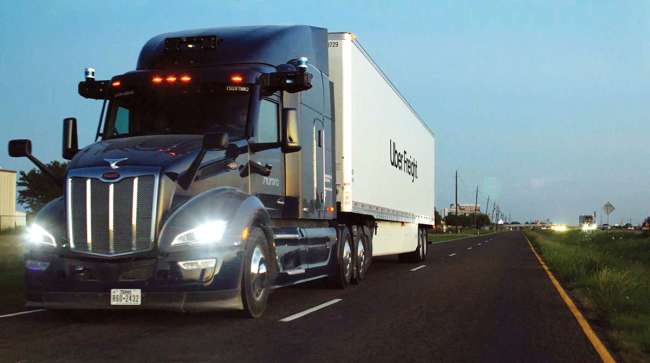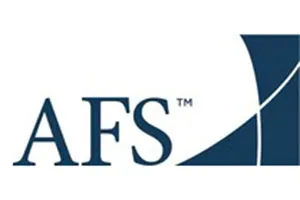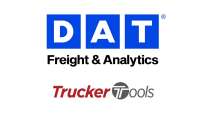Staff Reporter
Trucking Slowly Climbs Toward the Up Cycle in 2025

[Stay on top of transportation news: Get TTNews in your inbox.]
The trucking industry is expected to slowly improve next year even as market headwinds and uncertainty leave many unknowns heading into 2025.
The freight market has struggled for nearly two years to gain traction after it collapsed into an unusually prolonged down cycle, but that only came after an exceptionally good up cycle brought on by the coronavirus pandemic. Now experts are cautiously optimistic the resulting mismatch between freight demand and capacity will be further corrected over the coming year.
“You have a freight environment that is very slightly improved, and you have capacity that is very slightly lower — that has produced the makings of a recovery next year,” said Avery Vise, vice president of trucking at FTR Transportation Intelligence. “Utilization has steadily improved, but at this point is basically running at about an average level, and that isn’t really going to produce much of an inflection in rates. But we do expect to see that.”
Vise anticipates that inflection is likely to occur in the second quarter. One potential upset he is watching, however, is how the economy responds to the anticipated tariffs that have been floated by President-elect Donald Trump, though he is optimistic they could boost freight rates.
3 Weeks to Go! Are You Registered? Free 2025 Transportation Outlook Webinar!
Don’t miss this chance to prepare for what’s ahead in transportation. Register today! https://t.co/jhWHtUhV0W#TransportationInsights #FTRWebinar #SupplyChainStrategy #FreightForecasts pic.twitter.com/W6J3IJPVm9 — FTR | Transportation Intelligence (@FTRintel) December 23, 2024
“The only problem with that is, it’s going to be followed by a commensurate decline in activity because it’ll just really be a pull forward,” Vise said. “So it’s not likely to be something that is sustained. It’s more likely to be something that would just create some temporary spot strength, but not bleed over into anything stronger than that.”
Trump has long viewed tariffs as a way to create more factory jobs, shrink the federal deficit and lower food prices. He has proposed raising tariffs 20% on most imports. One exception would be a proposed 25% tariff on Mexican and Canadian imports unless those countries do a better job stopping illegal immigration and the flow of drugs into the U.S. He also proposed a 60% tariff on China.

Clair
“The new government coming in, new policies and redirecting what they’re doing, will be disruptive,” said Lee Clair, a managing partner at Transportation and Logistics Advisors. “And as bad as things have been, if it’s disruptive, it is most likely going to be on the positive side in turning business loose and making it easier to do business, and greater growth.
“It could take and accelerate that growth. I don’t think it’s a step function. I don’t think it’s going to come on like gangbusters. But it’s more likely than not to take the modest growth and make it better.”
Clair added there is always the potential the resulting uncertainty will cause disruptions, but he doubts it will be a problem given that a lot of the improvements the industry pursued in recent years have put domestic operations in a better position.
Experts from Sailun Tires dive into strategies for managing tire expenses amid a challenging freight market. Tune in above or by going to RoadSigns.ttnews.com.
He also noted products produced overseas will result in far fewer opportunities to move freight since foreign-made goods likely will only need a few final movements because everything else happened overseas.
“I’ve seen studies where it says for every final-goods movement on a domestic-made product, it can be over 12 to 20 domestic moves prior to that,” Clair said. “The amount of demand on domestic transportation when things shift from import to domestic is tremendous.”
Clair also noted that the number of drivers is far more important for capacity than the truck. The lingering question that remains, he noted, is whether capacity starts leaving the market when conditions improve enough for people to feel comfortable retiring. He suspects that it is going to start happening next year alongside freight demand continuing to grow slowly.

Perrone
“I try not to get political in these conversations because people have their own views on it,” said Tom Perrone, senior vice president of global professional services at Project44. “People have been holding their breath to see how the election went, especially in the U.S., and subsequently in other countries. So you’ve got a lot of fence sitters that are probably going to come out in 2025. I think 2025 is going to be a bold year in the transportation sector.”
Perrone also pointed out that 2024 was notable for democratic elections globally, with Pew Research data showing voters in more than 60 countries went to the polls. Because of that, global supply chains are now past many of their own regional uncertainties.
Perrone anticipates other potential tailwinds such as infrastructure investments.
“There’s going to be a bit of an unlock there that’s going to make things a little bit more friendly to transportation businesses,” Perrone said. “That stuff got put on the back burner for a long time, and we’re getting to the point where we just have to make those investments.”
Perrone also sees possible signs of longer-term freight growth. He noted that existing terminals have been expanding with the anticipation they are going to be facing increased demand. But he doesn’t expect the industry to fully feel the impact of that for another two to five years.

Castagnetto
“The potential for tariff expansions is up in the air,” said Michael Castagnetto, president of the North American Surface Transportation division at C.H. Robinson Worldwide. “We don’t know for certain what Trump’s inauguration will bring. But in less than 24 hours after his announcements about 25% tariffs on goods from Mexico and Canada, countless customers pulled us into meetings to run scenarios and build contingency plans.”
Castagnetto noted that many customers treat North America as one integrated supply chain, meaning it is expected some of their freight actually crosses the Mexican and Canadian borders. This is especially true for his automotive customers. However, he still is confident Mexico will continue to play a critical role given the effort to bring supply chains closer to home.
“Having done business in Mexico for over 30 years now, we’re confident Mexico will continue to be a significant source of cross-border freight for the foreseeable future,” Castagnetto said. “The companies we’ve helped nearshore to Mexico have been doing so not just to reduce their dependence on China. In a world with increasingly frequent and intense shipping disruptions, moving more of your production closer to the U.S. market limits risk.”
Castagnetto added that a question remains over whether uncertainty about tariffs or imposition of new tariffs could temporarily contribute to prolonging the freight down cycle while supply chains adjust to a new trade policy environment.

Vise
Vise pointed out much of the economic activity this year was in areas that don’t produce much freight. He noted that the two biggest drivers of consumer activity have been electronics and pharmaceuticals. That even includes software, which isn’t likely to have an impact on freight.
“We see basically no real investment in capacity,” Vise said. “Our own forecast really does not show capacity coming down. It really just shows it bubbling off and maybe coming down very slightly. But really, this is not going to be a capacity-led recovery. Which, if you go back a year, or certainly a year and a half, I think that’s what people were expecting.”
But that didn’t happen due to carrier failures stabilizing. Because of that, he views freight improvements also as critical.

“I think a lot of small and midsize brokers will continue to exit the industry, particularly those that don’t have any other complementary revenue services,” AFS Logistics CEO Andy Dyer said. “One of the things that’s allowed us at AFS to withstand this relatively well is, ‘Yeah, I’ve got a brokerage, yeah, it matters. But that’s not my only means of revenue.’ So we have diversity of revenue type and industries.”
Dyer expects trucking activity next year to range from flat to slow growth. What movement there is will primarily be driven by demand and capacity continuing to readjust to reach equilibrium. He also sees other potential influences that could impact freight in a positive or negative direction such as the likelihood that interest rates will be lowered more and reactionary behavior next year as people respond to proposed or rumored policy changes.
“What’s coming at us as an economy, in the next 12 to 15 months, is not altogether clear,” Dyer said. “And uncertainty drives weirdness. It just plain does. That’s why, again, we will see, potentially, some pull-ahead demand just as people want to get ahead of the uncertainty with some sort of protection for themselves.”





